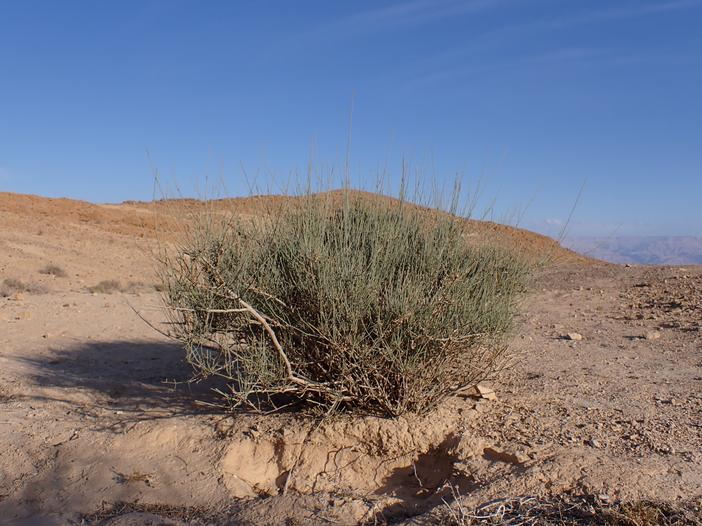Joint Pine
(Ephedra aphylla)
Joint Pine (Ephedra aphylla)
/
/

Krzysztof Ziarnek, Kenraiz
CC BY-SA 4.0
Image By:
Krzysztof Ziarnek, Kenraiz
Recorded By:
Copyright:
CC BY-SA 4.0
Copyright Notice:
Photo by: Krzysztof Ziarnek, Kenraiz | License Type: CC BY-SA 4.0 | License URL: https://creativecommons.org/licenses/by-sa/4.0 | Uploader: Kenraiz | Publisher: Wikipedia Commons



Estimated Native Range
Summary
Ephedra aphylla, commonly known as Joint Pine, is an evergreen shrub native to arid desert regions and rocky cliffs in the Middle East and North Africa. It typically grows to a height of 3-5 feet (0.9-1.5 meters) and a width of 2 feet (0.6 meters). This plant is characterized by its green, leafless stems that photosynthesize and small, inconspicuous flowers that are not particularly showy. It is adapted to harsh, dry environments and is known for its resilience to drought conditions.
Joint Pine is valued for its unique appearance and its ability to thrive in xeriscapes, where water conservation is a priority. It is often used in rock gardens, desert landscaping, and as a structural plant in water-wise garden designs. Ephedra aphylla requires minimal maintenance once established and is tolerant of poor, well-drained soils. It prefers full sun exposure to develop its best form. While not commonly used for its ornamental flowers, it is appreciated for its architectural structure and tolerance of extreme conditions. Gardeners should be aware that Ephedra species have been used medicinally, but they contain ephedrine alkaloids, which can be potent and are regulated in many countries.CC BY-SA 4.0
Joint Pine is valued for its unique appearance and its ability to thrive in xeriscapes, where water conservation is a priority. It is often used in rock gardens, desert landscaping, and as a structural plant in water-wise garden designs. Ephedra aphylla requires minimal maintenance once established and is tolerant of poor, well-drained soils. It prefers full sun exposure to develop its best form. While not commonly used for its ornamental flowers, it is appreciated for its architectural structure and tolerance of extreme conditions. Gardeners should be aware that Ephedra species have been used medicinally, but they contain ephedrine alkaloids, which can be potent and are regulated in many countries.CC BY-SA 4.0
Plant Description
- Plant Type: Shrub
- Height: 2.5-5 feet
- Width: 1-2 feet
- Growth Rate: Moderate
- Flower Color: N/A
- Flowering Season: Non-Flowering
- Leaf Retention: Evergreen
Growth Requirements
- Sun: Full Sun
- Water: Low, Medium
- Drainage: Fast
Common Uses
Drought Tolerant, Low Maintenance
Natural Habitat
Arid desert regions and rocky cliffs
Other Names
Common Names: High-Climbing Jointfir
Scientific Names: , Ephedra aphylla,
GBIF Accepted Name: Ephedra aphylla Forssk.